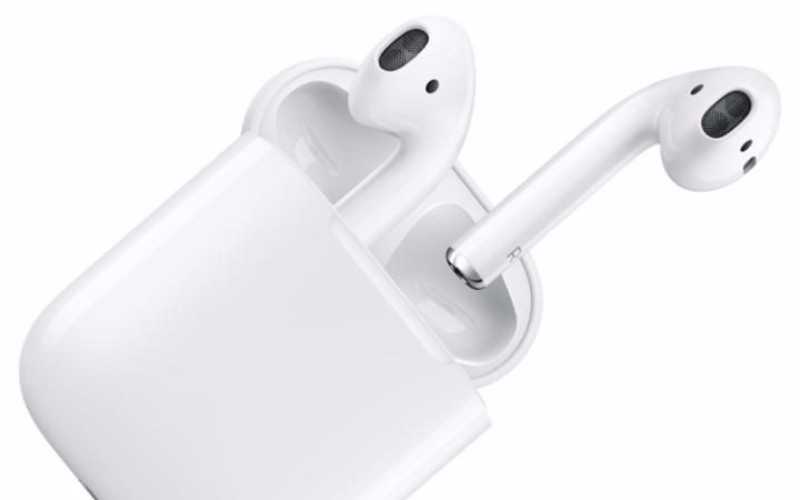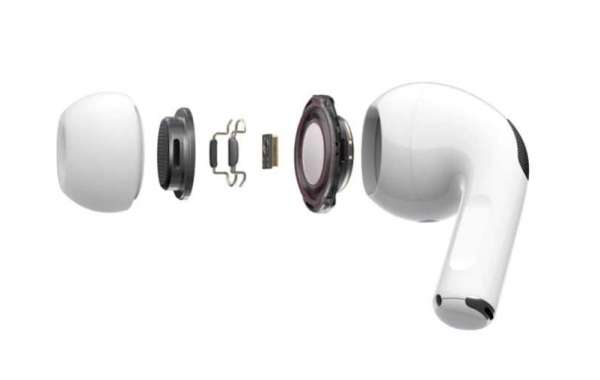When Apple first revealed its AirPods, people were still mourning the loss of the headphone jack on iPhones.
Despite this, the original AirPods proved a hit. While rivals were struggling with weak Bluetooth pairing and shoddy batteries, the AirPods and their cases quickly sold out.
Three years later, Apple has given its AirPods a much needed update. The new version requires users to pay nearly £100 more for an upgrade. At £249, the new AirPods are more expensive than ever.
As much as I hate to say it, I think the price bump on this one might be worth it. Here’s why.
What’s new?
Apple’s AirPods Pro comprise of two wireless headphones and a magnetic charging case. The headphones pair with your...
The future is wireless. Apple has done away with the headphone jack from the iPhone 7, and with it, sounded the death knell for cables.
Wires are annoying: they get tangled into impossible knots, caught on pieces of clothing, and mean you have to keep your phone in your pocket. We’ve put up with them because they’re reliable, and because the alternatives have been worse: Bluetooth headphones in the past were almost universally poor quality, expensive, lasted for just a couple of hours and were a pain to connect.
That’s all starting to change, and Apple has put its hat into the wireless headphone ring with the £159 AirPods, which after a couple of months of delays, finally went on sale in December.
But these aren’t just another set of Bluetooth headphones - in true Apple fashion they come with their own set of idiosyncracies which are at times delightful, at times frustrating, but always dividing opinion.
How they work
The AirPods comprise a pair of independent earphones and a magnetic case which does the job of carrying and charging them. The case itself is charged via a Lightning port, the same as on the iPhone or iPad.
The AirPods do connect to your iPhone via Bluetooth, but that’s where the similarities with other wireless headphones stop. They use a combination of software in iOS and a special chip to make connecting to your phone a piece of cake.
Whereas setting up Bluetooth headphones has always been a faff - turn them on, put them in pairing mode, find the right setting on your phone, wait, try again - with the AirPods, you just open the case, and a screen pops up on your iPhone asking you to connect.
Once set up, the AirPods will also be connected to other devices on the same iCloud account - iPads, Macs, Apple Watch etc. It’s a little thing, but a nice touch and the sort of benefit Apple gets by owning the whole experience.
They can function as typical Bluetooth headphones for Android phones - the pairing button is on the case - but something tells me that the vast majority of owners are going to be iPhone users.
Each AirPod has a microphone on the end, so you can make phone calls, and instead of controls for skipping tracks and changing the volume, you double tap a headphone to talk to Siri.
Are they any good?
The AirPods sound good - while not the greatest set of earphones, they are loud, and certainly better than the iPhone’s bundled headphones.
They’re also much more reliable than Bluetooth headphones of yore - the proprietary Apple chip (which also features in the latest Beats headphones) means connections are flawless, without stuttering, and the range is really impressive - I made it around 50 metres from my phone before the signal started to cut out - so you can easily have your phone on charge and walk around the house with the AirPods in

There’s no turning the AirPods on or off: you just open the case and pop them (or just one) in. Infrared sensors in the AirPods detect that they’re in your ear and voila, when you play music it plays through the AirPods.
Take a headphone out and the music pauses, put it in again and it restarts. This means that when you’re done listening, you just take the headphones out and put them in the case, without having to touch your phone to stop the music.
The whole system is really well thought out, from start to finish, and it’s one of the best things Apple has done in years: the old Apple slogan “It just works” feels like it’s back again.
Carrying around your headphones in the neat little magnetic case is also much nicer than a tangled set of wires at the bottom of your pocket, or the pouches that most wireless headphones come in, and it's a neat way of charging them - each AirPod has a five hour battery life but with the case you get 24. The microphone picks up your voice well and I’ve found myself using the AirPods for phone calls a lot.
Siri
The AirPods are a big moment for Siri: you’re supposed to use the virtual assistant, activated by double tapping the earphones, to control them. It’s why there are no volume or skip controls on the AirPods themselves (although as mentioned above you can pause just by taking one out).
It sounds great in theory - a real-life version of the assistants in the film “Her”. Unfortunately, it doesn’t work quite as well in practice. Siri requires an internet connection, so any time you’re without one it’s useless. The voice recognition, and ability to act on it, is patchy (say “louder” to turn it up, and Siri suggests I ring Claudia), and after a while I just found myself using my phone or Apple Watch to control the music.
You can use Siri to do all sorts of things apart from playing music, and Apple encourages you to do so with the AirPods - ask for directions home, for example. But the problem is that when you do this, you get the results on the iPhone’s screen rather than back through your ear. You may as well have not used Siri in the first place. If you’re used to something like Amazon’s Alexa, it’s a little disappointing, especially because a voice-controlled in-ear assistant has so much potential.
But do they stay in?
The first question everyone has asked me about the AirPods is “Do they stay in your ears?” and for the most part, they do.
While I’ve never got on with the EarPod headphones that come with your iPhone, the AirPods are better. While the fit is the same as the EarPods, the fact that they don’t have a cable pulling them down means they sit in the ear more easily. You can shake your head around and they’ll stay there. And after a week of using the AirPods, I haven’t lost one.
However, I did have some problems: when running (or briskly walking) for the train they’ve felt on the verge of falling out, and I’ve had to adjust them to keep them in. They did fall out of my ears when I was lying horizontally, and I definitely wouldn’t feel comfortable taking them for a run or falling asleep on a plane wearing them.
The AirPods are fine when stationary or walking, but all-rounders they are not. Even though they do stay in fairly reliably, this often wasn’t with a perfect fit, so I felt like the speakers weren’t pointed at my eardrum and I was constantly thinking about whether I would have to rescue one.
That said, everyone has different ears, and Apple’s design is supposed to be the one that suits the most people, I guess that just doesn't include me. Many users haven’t had any problems with the AirPods’ fit, so it will really depend on your own ears. I just wish there was an in-ear version.
As for the design, I’ve definitely had a few looks. They have a noticeable stalk coming down from the earbud that houses the battery and microphone, and in trademark Apple white they stand out a fair bit, but I imagine it’s something we’ll get used to. All Bluetooth earbuds look a little weird.
Verdict
The AirPods are one of the most intriguing things Apple has done in a long time, and most of the time are a delight to use: the set-up is simple, using them is easy and the sound quality is good.
At the same time there are frustrations: Siri is not as good as it could be after five years, and at £159, they’re not cheap, although few decent sets of wireless headphones are.
Still, when they work, it’s a definite improvement on bog-standard Bluetooth - as long as they fit in your ears.














